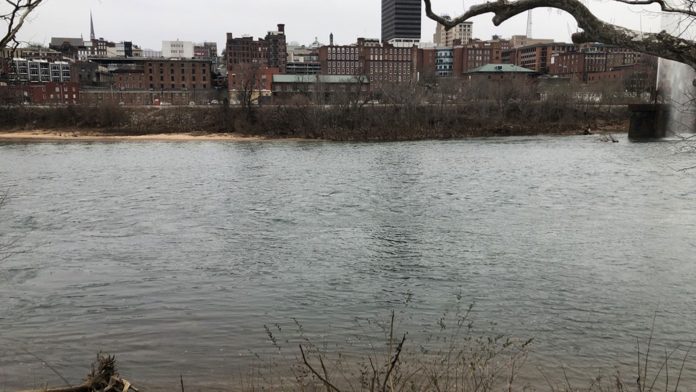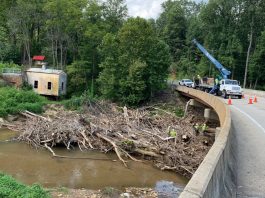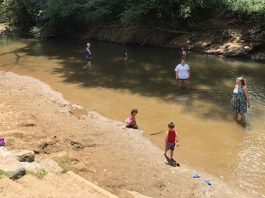Dr Thomas Shahady from the University of Lynchburg outlines how challenges facing urban water quality can be addressed through a more holistic approach.
The water quality of rivers flowing through urban and neighbourhood landscapes deserves our utmost concern. The people residing within these built communities are intricately linked to the water resources, regardless of whether that link is understood or not.
According to conventional thinking, the people in these dense urban environments do not appreciate the rivers. Reality, however, suggests otherwise. Restoration and clean-up projects energise a community, building pride and ownership. Good water quality reflects good community health. Residents engaged in environmental protection are engaged in good government. Renewing urban water quality generates a sense of place, economic vitalisation, better waterfronts, parks, watersheds and rivers. A time for reconciliation and protection is now upon us, and leaders are needed to change the previous exploitation to appreciation and enjoyment.
How did we get here?
Nature exists in a state of dynamic equilibrium with its surroundings. Rivers are no different. The river is in equilibrium with the area it drains. Historically, precipitation flowed into the ground not covered by development – in the distant past, this would be the entire area. This water eventually flowed into streams through soil that purified it, slowed its speed, and reduced discharge volume. Any water that might flow over the land from large storms was minimal and the size of streams and rivers reflected this pattern. The river system did flood, but not as a catastrophic event; it flowed into the floodplain adjacent to its banks, nourishing and replenishing these areas and the river system itself. Rivers created a mosaic of serpentine meanders from mountain headwaters to the coast, gently changing while moving sediment from one bank to another: a river in harmony with its surroundings.
But floodplains are flat, and the soil they are made of is desirable: building projects need flat land for development and farmers need good soil for crops. These floodplains thus became premium resources before we learned to flatten the earth for our buildings and fertilise the soil for our crops. Floodplains around major rivers soon became urban centres, and development moved along the water course throughout the drainage basin. Commerce easily moved along these waterways and development prospered. In our growth, we changed the natural balance between precipitation and overland water flow.
Precipitation making contact with these built impervious surfaces instantaneously generated new water flow. Water that previously travelled to streams through the ground now flowed over it. The river, once in harmony with groundwater, now received more water over land than ever before. In response, the river eroded its banks to gain harmony once again with this new pattern of flow.
As development increased, engineers designed conveyances, pipes, levees and reelevated floodplains to alleviate flooding. Unpurified water now enters our streams; retaining walls are built to control the excess volumes; and our water quality becomes untenable. In the final stages, much of the river is enclosed in pipes and culverts to manage the problem. What was once a majestic river flowing through a beautiful landscape is now a piped culvert or polluted river that people are ashamed of.
The paradox of development
An examination of the tax roles for urban governments describes land as either ‘improved’ or ‘unimproved’. The suggestion is that building upon the land improves it. From a local government perspective, this is understandable because improved land yields more tax revenue. But from an environmental perspective, such projects are not improvements.
Herein lies the paradox. Urban governments have autonomy over local land decision-making. As a result, property is taxed, and local governments are funded. Government revenues therefore increase; and as land improvements grow to meet population demands, local authorities must approve development. It is difficult to suggest stopping this because to do so would entail halting funding to essential services such as police, fire, schools, and roads.
On the other hand, these development projects fundamentally change the function of the watershed. Overdevelopment leads to a lower quality of life and the greater need for the essential services to maintain the burdensome infrastructure. Ecological services become minimised to local parks and greenways. Precious space is needed for development, not the life-purifying functions provided by trees, soil, and wildlife. The effort to manage waste and supply energy intensifies.
Some advocates put forth land easements preventing further development of the land, but these agreements exist into perpetuity, which makes land managers hesitant. Others suggest the segregation of remaining land use into enterprise zones, generating various protective strategies. But free market environmentalism advocates for strong property rights. Compensation for changing land use must be addressed.
This paradox is difficult to solve. Smart or low impact development (LID) is trending, but development continues to impact the environment. Challenges such as poor soils, limited space, and water volume must be overcome. Expense, political will, and land availability will always be difficult obstacles. But an urban lifestyle has become more appealing. Urban centres are revitalising with the environment part of the conversation. A desire to improve, driven by both regulatory authority and urban residents pushing river water quality to the forefront, is now part of the planning.
A roadmap for urban water quality improvement
An era of neglect seems to be reversing. Solutions are pervasive, with a better understanding of watersheds as holistic. Streams viewed as living systems are invited into our communities rather than commandeered to eliminate our waste. Residential approval is now in place to expend resources to be in harmony with these systems, rather than dominate them.
To repair this relationship, aquatic resource restoration, watershed management, and retrofitting past development are all promising steps. Stream restoration is one holistic approach, taking into consideration the entire watershed and returning the stream to some resemblance of a previous existence. Infiltration is another. Areas littered with detention ponds can be retrofitted to infiltrate surface runoff reconnecting that vital link between the river and water flowing from the ground. And urban lakes are newly valued, too. Understanding their vital role in capturing sediment from eroding streams, filtering pollutants, and providing recreational opportunities equilibrates watershed sustainability until further measures are implemented. All of these approaches can work together to improve our water quality.
The necessary work remains immense, but it needs to be initialised. Streams once buried under urban growth or channelled into concrete corridors need to be released to flow naturally through our landscapes once more. Information campaigns creating a deeper appreciation for streams and rivers as resources that are invaluable to our urban living must be launched and supported. Urban infrastructure is our current reality, but upstream renovations and riverfront revitalisation can provide a needed upstart. We need to take charge of river management and restoration so that our communities reflect the values and good water quality we all desire.
Please note, this article will also appear in the fifth edition of our quarterly publication.









